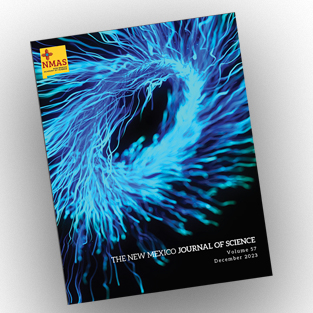NEWS
Externship Report: Tom Nakotte, Take 2!

By Tom Nakotte
The Externship Program is a research exchange program that allows New Mexico graduate students (with an existing assistantship) to spend a semester or summer doing research at a partnering New Mexico university or research facility. This report is from New Mexico State University student Tom Nakotte about his second externship experience, this time as an extern at Los Alamos National Labs.
Over the past year, with support from the NM EPSCoR externship program and my advisors, I have been fortunate enough to conduct my doctoral research at Los Alamos National Laboratory with some of the best scientists in the field of colloidal quantum dots. The group I have been working with is led by Victor Klimov, one pioneers of the quantum dot field, and Jeff Pietryga, both of whom have helped me immensely with understanding quantum dots and their capabilities as well as how to conduct research in a national laboratory setting. The group is made up of two separate teams; the chemistry team as well as the physics (or spectroscopy) team, these two teams work together to synthesize QD’s, make devices (such as FET’s and solar cells), and study their physical, electrical and optical properties. The group is comprised mostly of postdocs, all of whom work on different projects from LSC’s to LASERs, to detectors, which has enabled me to learn not only about the projects I am working on but many others as well. During the year that I have been the group, they have treated me as a regular employee, which means that I have attended all the literature and team meetings and presented in these meetings when it is my turn. These team meetings are of great help, because I can present my results as well as the problems I have been encountering during my research and as a team we can talk them over and find solutions as well as possible steps to take in the future.
The two projects I have been working are both related to solar energy, more specifically the process of carrier multiplication (which is production of multiple electron-hole pairs for absorption of one higher energy photon). The first project is the PbTe/CdTe/CdS(e) (core/shell/shell) structure and the second is the PbSe/CdSe/CdS (core/shell/shell and tetrapod structures). PbTe quantum dots are of particular interest for solar applications because of all the lead chalcogenides they have the highest capacity for carrier multiplication, meaning that photons that are only slightly higher in energy than two times the bandgap of the material could produce multiple excitons (electron-hole pairs). However PbTe QDs are also extremely air and water sensitive (meaning they lose their desirable properties when exposed to air), therefore much of my time spent working with this materials is done in an oxygen free environment such as a glovebox. I have gotten some interesting results with these materials but further work is still needed to be done. More recently I have been working on the project using PbSe core structures, in an attempt to recreate samples that were made in the group by a previous postdoc. The PbSe based structures are more resilient to oxidation by air, especially when passivated with chlorine, so I could work outside the glovebox. The PbSe/CdSe/CdS structure exhibits extremely long carrier lifetimes (which is the amount of time electron and hole stay separate before recombining), which is another key aspect for creating higher efficiency quantum dot based solar cells.
This has been my second time in the NM EPSCoR externship program and I have really enjoyed both instances, because I have learned a lot and had the opportunity to work with great scientists and postdocs along the way. I have gained valuable experience by being allowed to use instruments such as HR-TEM and AFM, as well as interacting with some of the leading scientists in my field of study.

